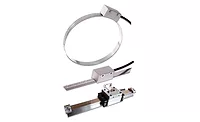Channel Strategies
Club stores pivot in pandemic climate
Healthy products, omni-channel offerings drive club store growth

With a wide array of offerings at discounted prices, club stores can support a variety of consumer states of need. In a pandemic climate where consumers have been compelled to buy in bulk, club stores have reaped the benefits. However, as eCommerce becomes a bigger rival, club stores might need to hone in on omni-channel offerings to ensure the channel’s ongoing vitality.
“Online delivery options have been beneficial for club members, further boosting sales,” says Ashwini Shetty, research associate for food and beverage domain at London-based Future Market Insights (FMI). “Government lockdown measures have prompted consumers to stock up in bulk at club stores.”
According to a 2018 survey by FMI, 36 percent of U.S. respondents said household stock-up was their primary reason for visiting club stores, while hypermarkets, supermarkets and convenience stores have seen a dip in sales mid-pandemic.
Food and beverage performance
Food and beverages sales accounts for 49 percent of club store sales, FMI’s Shetty says. Of this, carbonated soft drinks (CSDs) saw modest declines in 2019, having decreased annually for more than a decade due to consumers’ shift toward healthier alternatives and low sugar intake.
“Bottled water widened its gap over CSDs as the largest beverage category in the U.S.,” Shetty says. “Stocking fusion beverages and drinks sourced from natural ingredients also will boost sales, spurred by consumers’ willingness to experiment.”
Sarita Bayas, research analyst at Selbyville, Del.-based Global Market Insights (GMI), says that in 2018, U.S. club store outlets sold more than $56 billion in beverages, representing year-over-year sales growth of $1.8 billion (3 percent) and 2 percent unit volume growth.
“Smoothies and blended fruit and vegetable beverages have witnessed lowered demand from consumers across the region, showcasing changing tastes in how America drinks,” she says. “Even coconut water, which was a top growth-driver just a couple years ago has been negatively impacted by consumers seeking enhanced waters for their hydration needs.”
Bayas advises club stores to stock up on functional beverages, immunity boosters, nutritional drinks and sport drinks. Sparkling and value-added water also have fared well, as they posted growth rates of 43 percent in dollars and 42 percent in unit volume year-over-year, she says.
“Ready-to-drink coffee is another popular drink variant projected to see growth,” Bayas says. “Alcoholic beverage sales have spiked significantly as well, with the overall sales soaring by 58 percent at the ending of March 2020.”
A bright outlook
Although falling crude oil prices have negatively affected club store revenue, profit margins have stayed strong, according to a report from Los Angeles-based IBISWorld.
“Club store revenue has increased at an annualized rate of 1.3 percent to $514.4 billion over the five years leading up to 2020, with industry revenue expected to rise 6.6 percent in 2020 as consumers stock up to stay home,” states IBISworld’s “2020 Warehouse Clubs & Supercenters in the US” report.
To compete with online retail channels, industry experts note club stores can maintain a foothold by implementing eCommerce platforms, embracing omni-channel retailing and improving the in-store experience. For example, the Sam’s Club Now app offers smart shopping lists, wayfinding, navigation, augmented reality features, and one-hour grocery pickup.
“The retail environment today is as dynamic as it has ever been,” GMI’s Bayas says. “Increasing technological adoption by major market players will increase the attention of millennial consumers and incite growth now through 2025.”
Looking for a reprint of this article?
From high-res PDFs to custom plaques, order your copy today!






